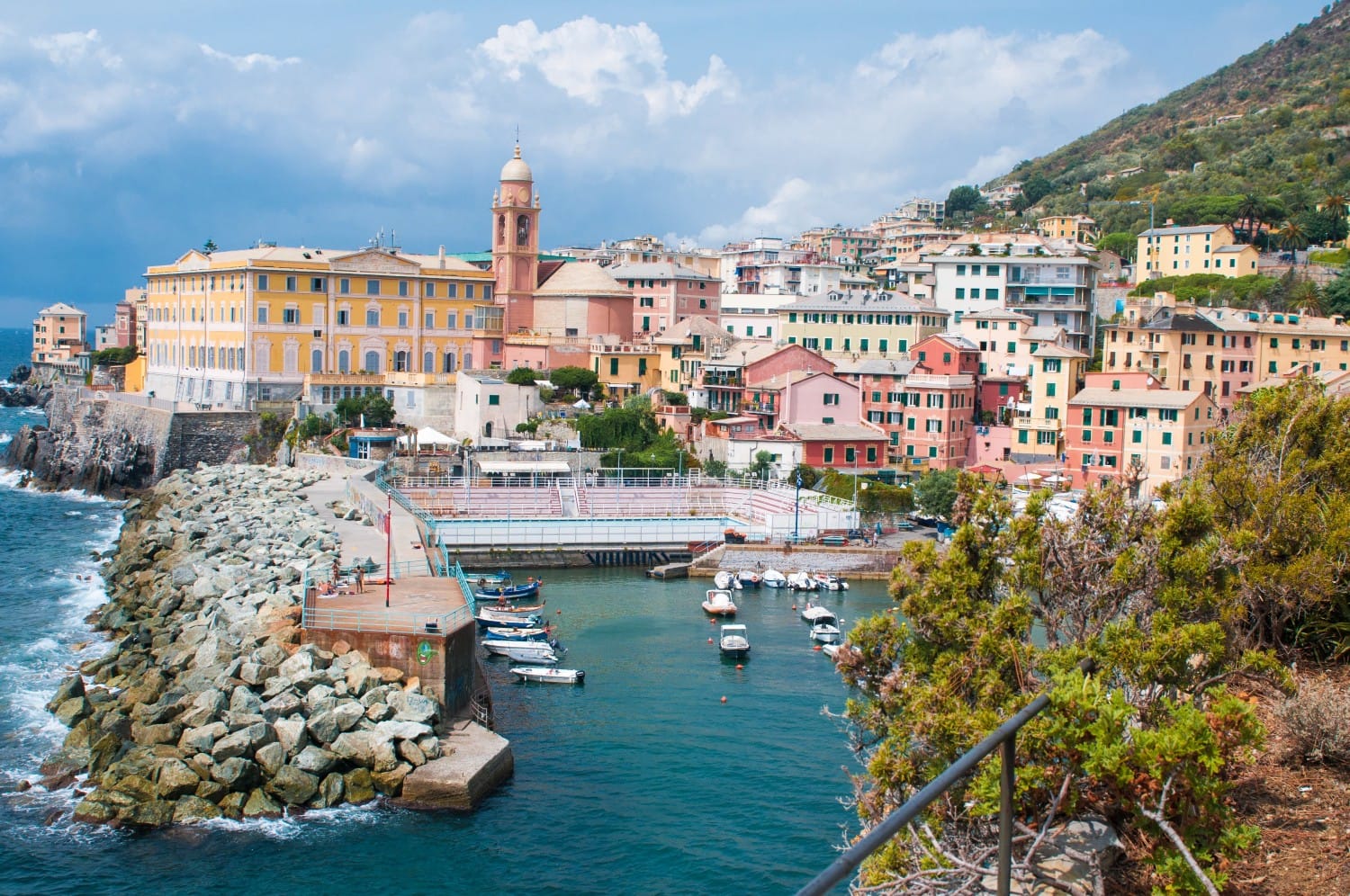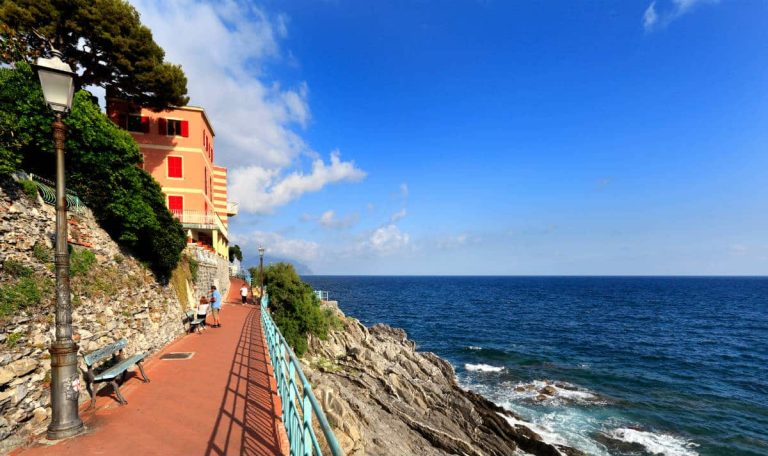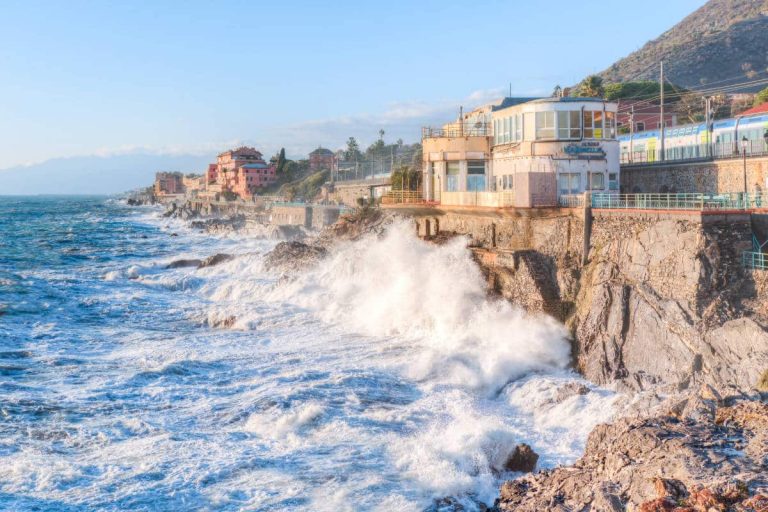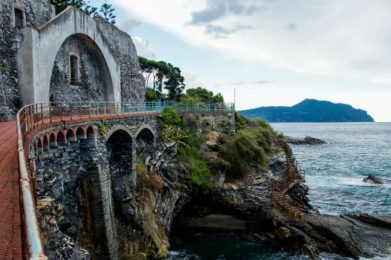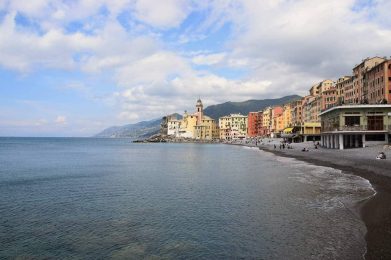Nervi is a refined and charming seaside village located on the far eastern outskirts of Genoa, suspended between sea and hills in a landscape that combines natural beauty, architectural elegance, and a rich cultural heritage. Embraced by a cliff that gently descends into the Ligurian Sea, Nervi is famous for its iconic Passeggiata Anita Garibaldi, a romantic pedestrian path of about two kilometers overlooking the sea that is among the most picturesque in Liguria. This scenic stretch connects the small port to the village of Capolungo, offering spectacular views in every season.
A climate that has been conquering for centuries
The heights close to the sea give Nervi a mild, breezy microclimate that, as early as the 18th century, attracted vacationers from all over Europe. In particular, elites from northeastern Europe and Russia chose Nervi as a winter retreat, convinced of the benefits of the salty air in curing tuberculosis. They were also joined by the Genoese nobility and upper middle class, who built sumptuous villas that can still be seen today in Nervi Parks.
Parks and Villas: a green living room by the sea
The green heart of Nervi consists of a set of aristocratic gardens unified into a single public park covering more than 92,000 square meters between Via Aurelia and the cliff. In addition to palm trees, cedars, a prized rose garden and five monumental trees, the park is home to some of the most beautiful historic villas in Liguria, now transformed into internationally renowned civic museums: Villa Saluzzo Serra houses the Gallery of Modern Art (GAM) with masterpieces of Ligurian and European art from the 19th to the 21st century; Villa Grimaldi Fassio houses the Frugone Collections, collections of paintings, sculpture and decorative arts related to the Belle Époque; Villa Serra Gropallo houses the Wolfsoniana, a museum of art and propaganda documenting the visual arts between 1880 and 1945; Villa Luxoro, currently closed for restoration, preserves Italian and foreign works and art objects, with a focus on Ligurian seventeenth- and eighteenth-century painting.
History, architecture and tradition
Nervi's origins go back to antiquity and are said to be related to a Celtic settlement, as suggested by the motto on the city's coat of arms "NEAR AV INN", meaning "place near the sea." The present name would derive from a mispronunciation of this expression.
Prominent among the vestiges of the past is Torre Gropallo, also known as "hay tower", a 16th-century building used as a coastal watchtower. Wet hay was burned here to signal danger through columns of smoke. Also nearby is Nervi Castle, built to protect the landing place now corresponding to the village's picturesque harbor.
The Marina and Capolungo
The small port of Nervi, with its boats lying on the shoreline, colorful fishermen's houses and flowering pergolas, is a living postcard of the most authentic Liguria. On the eastern side is Capolungo, a tiny hamlet that represents the end of the seaside promenade. Here is the old Sant'Ilario station, made famous by Fabrizio De André in the song Bocca di Rosa.
Nerves today
In addition to being an outstanding cultural and naturalistic destination, Nervi represents an ideal gateway to the Riviera di Levante. Its tourist vocation is also expressed in its numerous events, outdoor activities, and ability to blend urban elegance and unspoiled nature.
Between sea views, art and gardens, Nervi is today an enchanted corner of Genoa that keeps alive the aristocratic and cosmopolitan spirit that has made it world famous.

